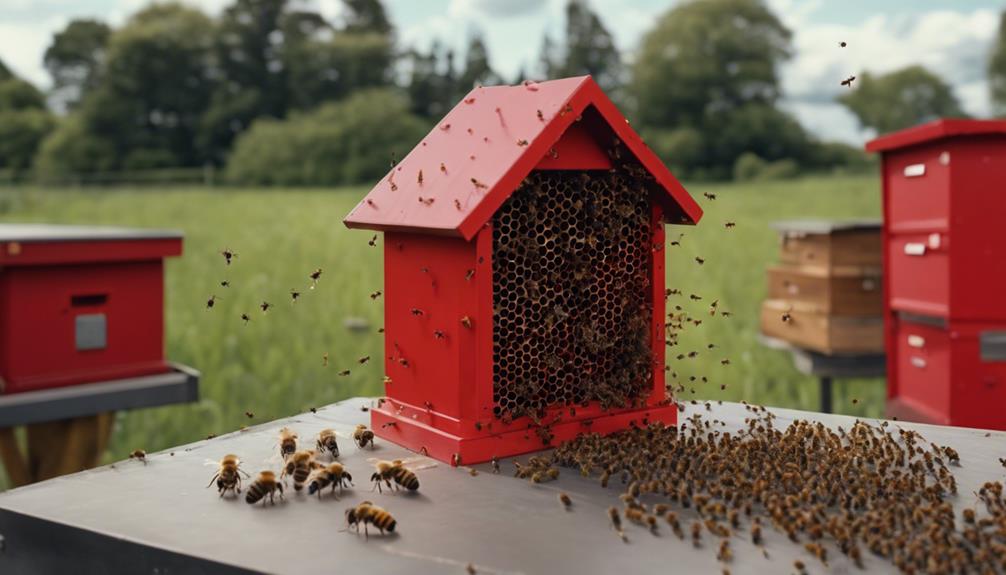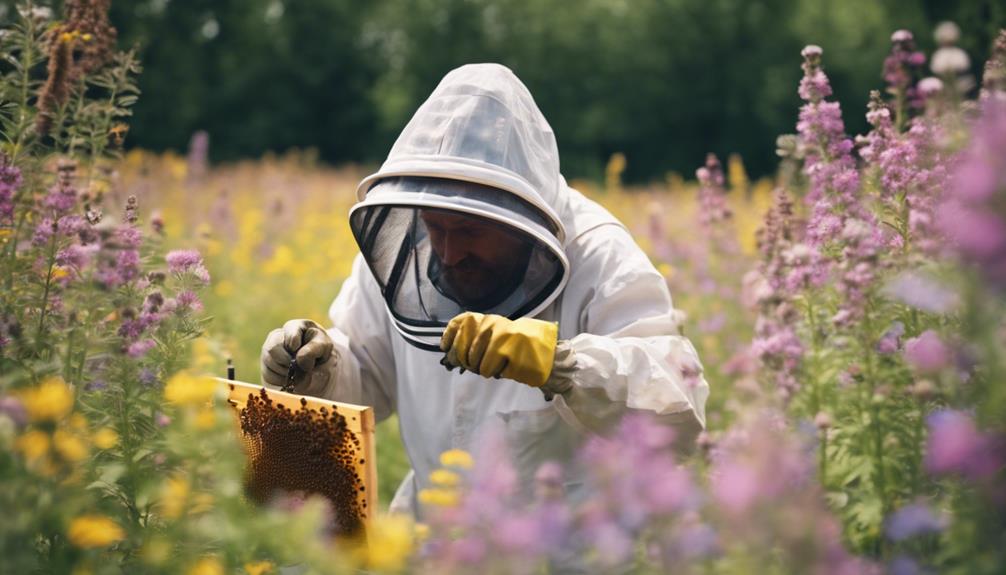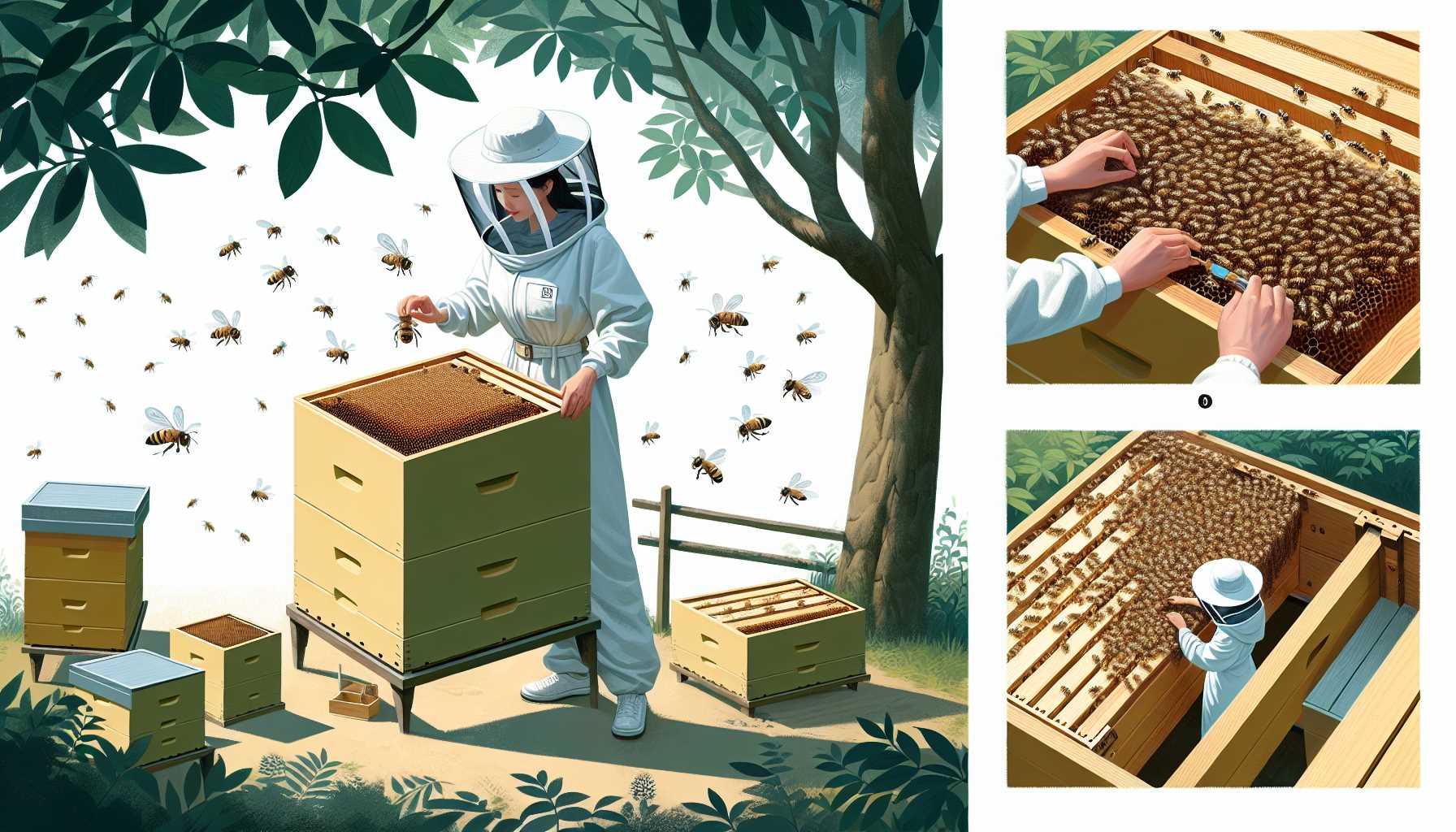Using an entrance reducer in a beehive is crucial for us beekeepers. It helps enhance hive functionality, protecting our colony against various threats. By controlling air flow, it prevents hive overheating and keeps our busy bees cool and comfy. These little gadgets safeguard the bees’ survival, ensuring a cozy home for them. There’s more to this beekeeping secret; keep buzzing to unravel further benefits for our beloved pollinators.
Main Points
- Enhances hive functionality and security.
- Regulates hive temperature for bee health.
- Prevents pest infestations and robber bees.
- Maintains optimal humidity levels for bees.
- Conserves heat and energy efficiently.
Benefits of Using Entrance Reducers
Using entrance reducers improves hive functionality and protects the colony against various threats. During the summer months, when temperatures soar, having a small entrance can make a big difference. By controlling the air flow, these reducers help prevent the hive from overheating. This not only keeps the bees cool and comfortable but also safeguards their survival.
Additionally, reducing the hive entrance size with these handy tools plays an essential role in maintaining hive health. With entrance reducers made from durable materials, you can rest assured that your bees are well-protected for the long haul.
Importance of Hive Temperature Regulation
Maintaining stable hive temperature is important for the survival and well-being of bees in a colony. Here are four key reasons why temperature regulation is essential for the hive and its inhabitants:
- Preventing Overheating: Bees can suffer when the hive becomes too hot, impacting their health and productivity.
- Enhancing Productivity: By regulating temperature, bees can focus on their tasks without being affected by extreme heat or cold.
- Supporting Colony Health: Well-regulated temperatures contribute to a thriving hive, ensuring the bees’ well-being.
- Surviving External Threats: Temperature fluctuations and external factors can pose risks to the hive, but proper regulation helps bees endure these challenges effectively.
Maintaining an ideal temperature in the hive is like providing a cozy home for our fuzzy friends, ensuring they thrive and flourish.
Preventing Pest Infestations With Reducers
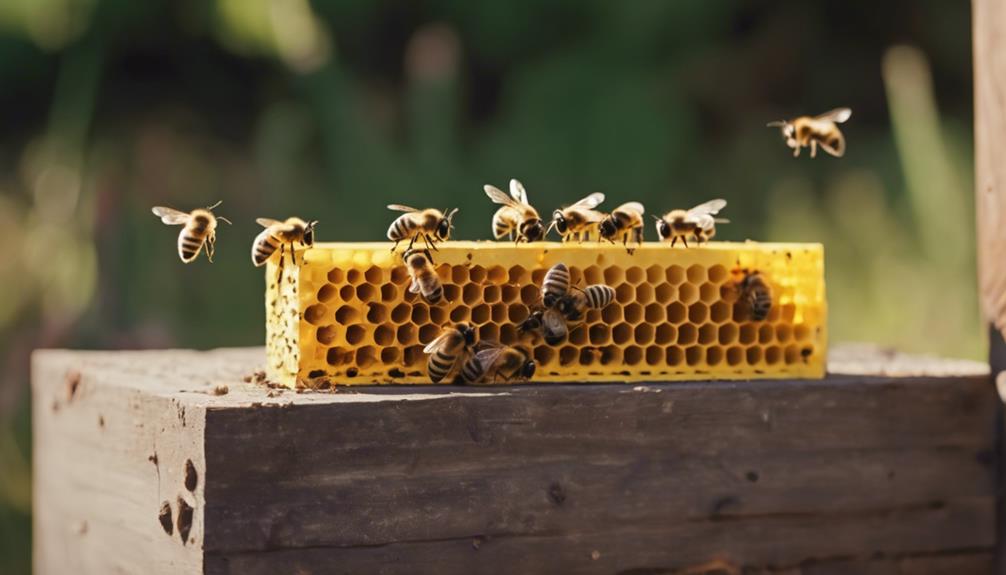
Preventing pest infestations with reducers is a vital step towards ensuring hive security and safeguarding bee well-being. By controlling the size of the bottom entrance, reducers play an essential role in keeping unwanted visitors like mice, raccoons, and wasps out of the hive.
These barriers also deter robber bees from exploiting the colony, reducing the risk of infestations and promoting a safe environment for our buzzing friends. It’s like having a security system for our bees, helping them thrive without unnecessary disturbances.
Maintaining Hive Humidity Levels
Regulating hive humidity levels is essential for ensuring peak bee health and productivity. To maintain the best humidity inside the hive, consider the following:
- Humidity Control: Monitoring and adjusting humidity levels can help support brood development and overall colony well-being.
- Ventilation: Proper airflow through the hive is critical in regulating humidity and preventing issues like mold and excessive condensation.
- Airflow: Entrance reducers play an important role in managing airflow within the hive, assisting in humidity control.
- Regulating: Balancing humidity levels through proper ventilation not only improves the hive environment but also promotes better bee welfare.
Conserving Heat and Energy Efficiency
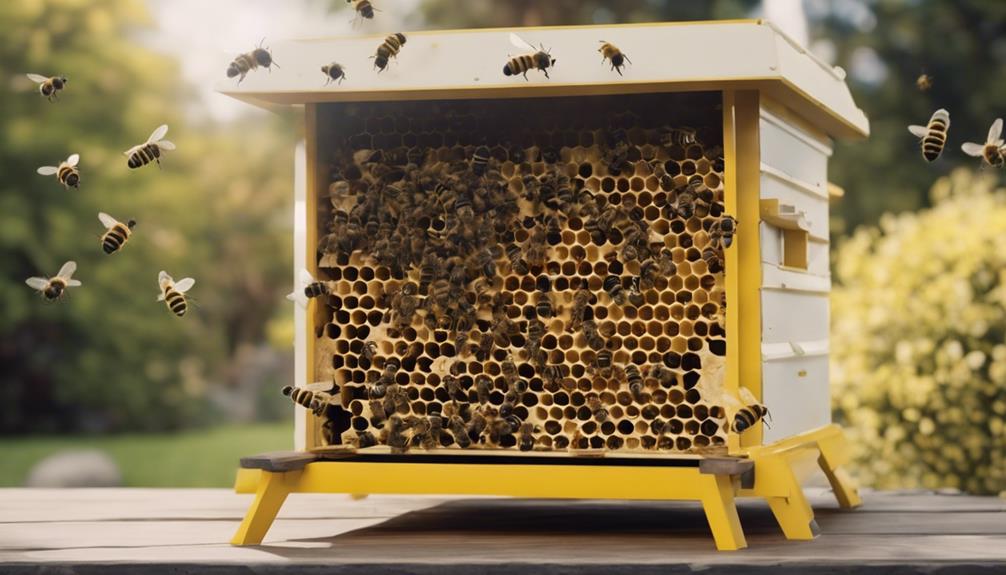
Entrance reducers play a vital role in our hive’s ability to conserve heat and energy efficiently. By reducing drafts and maintaining a stable temperature, we guarantee the well-being and survival of our colony.
With improved insulation and controlled airflow, our hives can thrive, promoting better brood development and honey production.
Heat Retention Benefits
By decreasing the entrance size with an entrance reducer, we effectively increase heat retention within the hive, supporting energy efficiency and aiding in maintaining the ideal temperature for hive activities. Entrance reducers offer several benefits in terms of heat retention and conserving energy:
- Conserving Heat: Smaller entrances help minimize heat loss during cold weather, ensuring the hive maintains its warmth.
- Energy Efficiency: The reduced entrance size supports bees in conserving energy for essential hive tasks.
- Improved Heat Retention: By preventing cold drafts from entering the hive, entrance reducers boost heat retention efficiency.
- Regulating Temperature: The energy-efficient design of entrance reducers assists bees in effectively regulating the internal temperature of the hive.
Energy-Saving Advantages
To maximize energy savings and improve heat retention within the hive, entrance reducers play a crucial role by minimizing heat loss through reducing the hive entrance size. By using these energy-efficient designs, bees can better regulate the internal climate, conserving heat and ensuring ideal conditions for the colony.
This small adjustment in the entrance size can make a significant difference in maintaining warmth during colder seasons, supporting the bees’ survival. With reduced drafts and heat loss, entrance reducers not only aid in energy savings but also contribute to the overall efficiency of the hive.
Improved Hive Insulation
Improving hive insulation is key to conserving heat and enhancing energy efficiency in bee colonies. Here are some important points to ponder about enhanced hive insulation:
- Reducing Drafts: An entrance reducer helps minimize drafts, preventing cold air from entering the hive and disrupting the colony’s internal temperature.
- Conserving Heat: By reducing heat loss, improved insulation helps maintain a stable and warm environment inside the hive, essential for the bees’ survival, especially in colder months.
- Enhancing Energy Efficiency: With better insulation, bees don’t have to work as hard to regulate the temperature, conserving energy that can be better utilized for other hive activities.
- Comfortable Environment: Ultimately, improved hive insulation creates a more comfortable and conducive space for the bee colony to thrive.
Enhancing Hive Health and Well-being

Enhancing hive health and well-being involves utilizing entrance reducers to regulate airflow and temperature within the hive. These small devices play an important role in maintaining a balanced environment for our bees, especially during the hot summer months.
By using an entrance reducer, we can help prevent larger pests like mice from entering the hive, safeguarding the colony from potential threats. Additionally, these reducers aid in reducing drafts and wind, which is essential for conserving heat when temperatures drop.
Controlling humidity levels is also essential for bee well-being and survival. Ensuring that the hive environment is stable and ideal through the proper use of entrance reducers contributes significantly to the overall health and prosperity of our bee colonies.
Optimal Conditions for Bee Colonies
Maintaining an ideal hive entrance size is essential for efficient temperature regulation and the overall health of bee colonies. When considering the best conditions for bee colonies, it’s crucial to make sure that the entrance size is just right. Here are some key points to remember:
- Temperature Regulation: Adequate entrance size allows for proper airflow, helping bees cool or warm the hive as needed.
- Predator Protection: Wooden entrance reducers can deter unwanted guests, safeguarding the colony from harm.
- Colony Security: Consistent entrance size provides stability, creating a secure environment for bees to thrive.
- Assistance for Small Colonies: Entrance reducers can aid weaker colonies by controlling access and maintaining a safe space for growth.

Roger Thomas is a seasoned beekeeper and hive architect with a deep-seated passion for sustainable living. His fascination with bees has shaped his professional career, giving him practical and theoretical expertise in bee behavior, colony health, and optimal hive conditions. Roger’s technical skills shine in his bespoke hive creations that cater to the specific needs of diverse bee species, while his sustainable practices promote environmental balance and the wellbeing of the bee population.
As he continues his journey in beekeeping, Roger has become a dedicated advocate for responsible practices and an insightful educator in his field. His posts aim to inspire new beekeepers, underline the importance of sustainability, and showcase the remarkable contribution bees make to our ecosystem. Roger invites you to join him as he delves into the world of bees and the rewarding, honey-sweet art of beekeeping.
